6 Real Christmas Tree Problems To Watch Out For – And How To Fix Them Fast
Get back to enjoying the glory of your natural Christmas tree with our guide to troubleshooting common issues, from needle drop to watering woes.

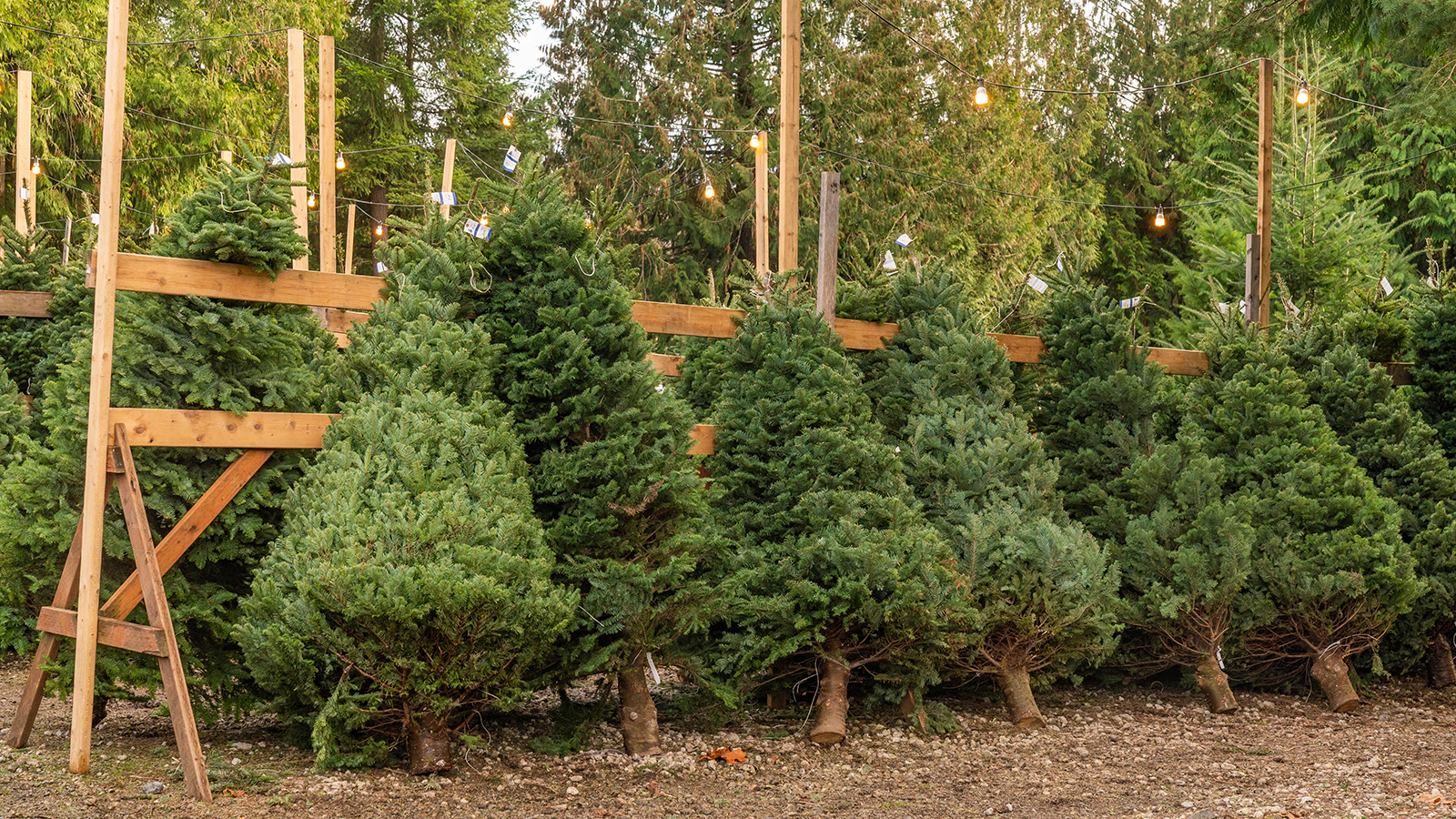
Christmas trees are wondrous symbols of the holiday season and fill our homes with festive promise. In the Christian faith, these trees represent Jesus’ birth and resurrection. For other celebrants, the tree is a symbol of hearth and home and a peaceful winter season.
Picking the right Christmas tree is a cherished ritual for many families, so it is disappointing when things go awry with our evergreen holiday greenery.
If you avoid some common Christmas tree mistakes and choose one of the best varieties, then most of the time only basic Christmas tree care is needed to keep them trouble-free.
To make a Christmas tree last until the 12th day, it needs only regular watering and to be positioned away from a heat source. But sometimes, hitchhikers, disease, stability issues, and watering problems can make our tree look a little sad and bring a less-than-jolly feeling into the home.
Here are 6 of the most common problems with Christmas trees and some of our tips on prevention and solution.
1. Insects
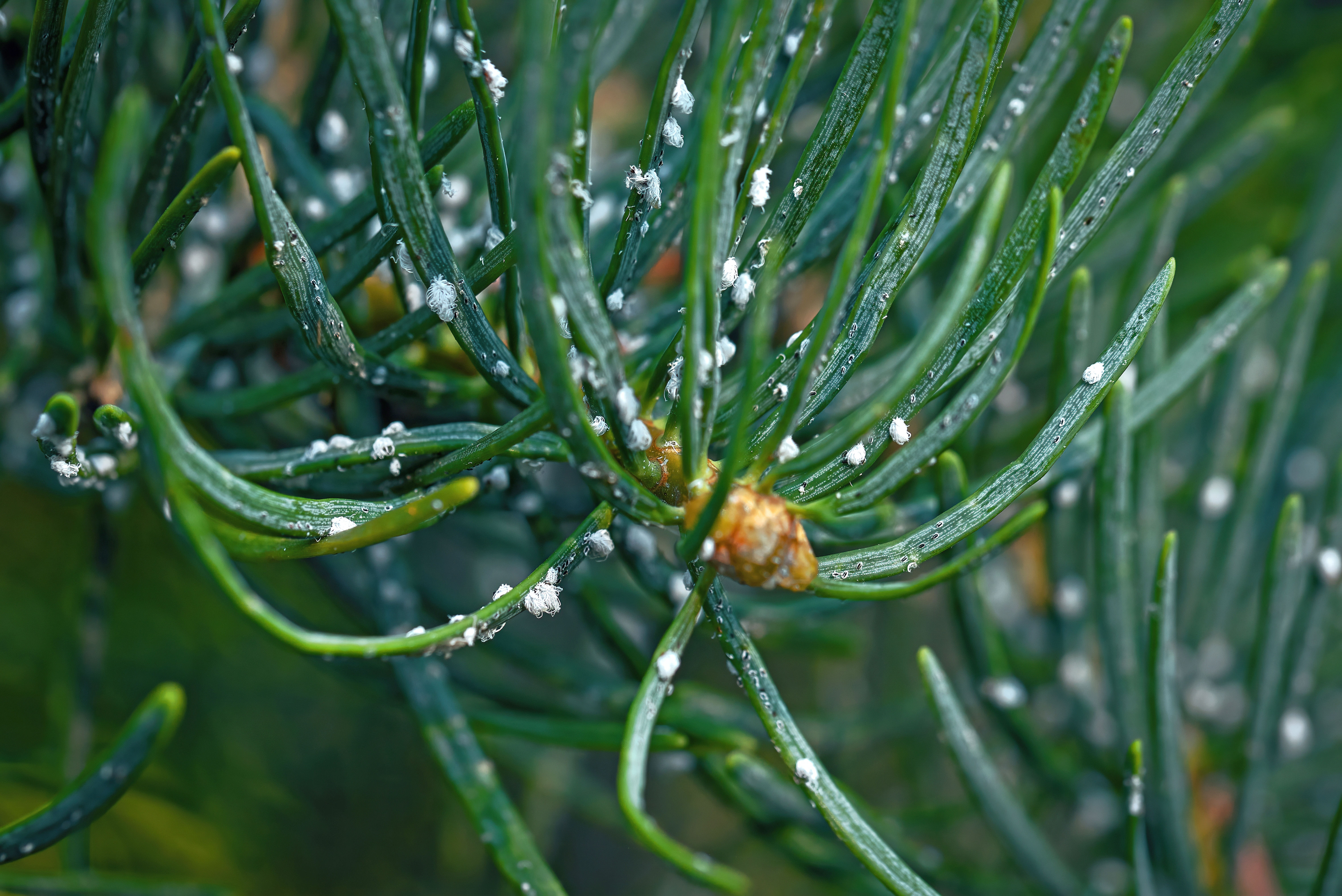
Our lovely Christmas trees are grown outdoors. What else lives outdoors? Insects. These pesky Christmas tree bugs can hitch a ride into our home interiors on the tree, harming the tree as they get more active in the warmth, and potentially spreading to other plants.
Aphids of several types are the most common invaders. They can be present on any part of the tree but are most common on the lower branches.
Sign up for the Gardening Know How newsletter today and receive a free copy of our e-book "How to Grow Delicious Tomatoes".
Black and yellow flies called sawflies, scale insects, bark beetles, adelgids, mites, and spiders may also come into the home on the tree.
Even beneficial insects like praying mantis may make themselves unwelcome. This is because the egg casings can hatch in the home’s warmth, sending tiny babies everywhere.
Before you bring the tree indoors, give it a good eying over. It can be helpful to shake the tree and dislodge some pests.
If there are concerns about pests, then you can dust the tree with diatomaceous earth (wear a dust mask to avoid inhalation) or spray neem oil on all the branches. Shake off any residue before bringing the tree inside.
2. Watering Problems

If you notice the dish of water has not changed in level in a day or two, the Christmas tree is not drinking water. This can eventually lead to needle drop and a fire hazard.
When you bring the tree home, or at the tree lot, a slender piece of wood should be sliced off the bottom. This is because the cut end will have sealed up, preventing water movement into the tree. Cut trees drink quite a bit of water, generally a quart for every inch of trunk diameter.
3. Instability and Tipping
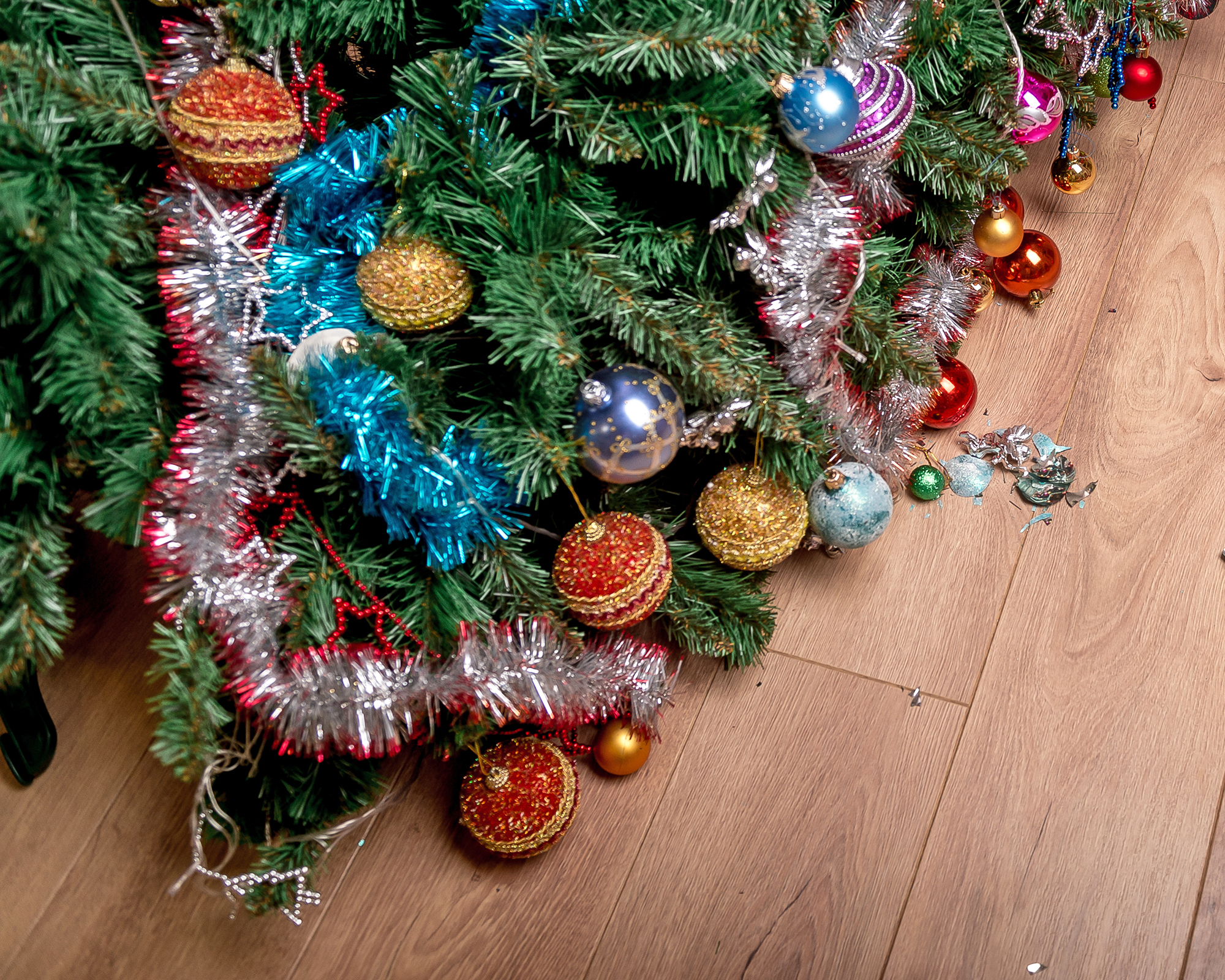
You may have a tree with a fairly straight cut at the bottom of the trunk but it will still not stand upright. Many tree stands have screws to turn to help you adjust the way the tree stands. But even with these, a crooked tree that just grew that way will still look lopsided.
Correcting the problem starts at the lot with prevention. Inspect your tree well to make sure it is evenly grown and has well-balanced branches. Then look at the cut end. Often these are cut down by hand and may have needed a couple of attempts. The end may be uneven and in need of fixing prior to purchase.
Once you have your tree home, if you still can’t get it straight, use wood shims or other thin material to hoist up any side of the tree stand that is listing. You can also insert these into the screws themselves to help prop up a tipping tree.
If all else fails, lightly pruning Christmas trees can help improve their shape and reduce the impact of uneven branches.
4. Dry, Brittle Branches
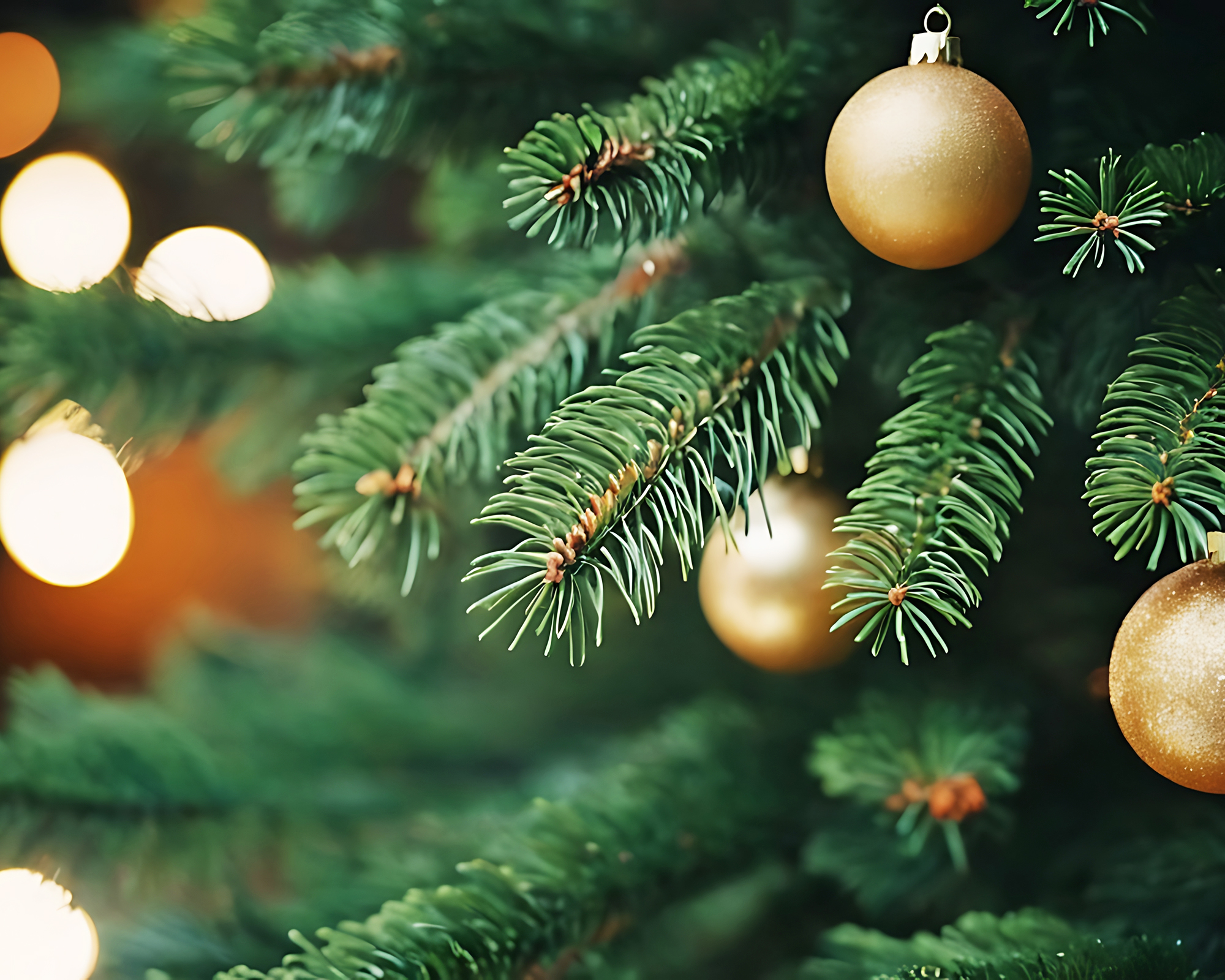
Really look at the tree prior to purchase. A tree that was cut several days or even weeks ago will already be dry and have falling plant material. Give it a little bump on the ground and see how much plant material falls. A fresh tree should only drop a few needles.
However, if the tree is already home and it's showing signs of dryness, you can try to rehydrate it. Place the cut end into a bucket of warm water for several hours. This may open the cuticle and allow the water to percolate up the tree.
Do not erect your tree near blowing heating vents or the fireplace. Such placement will only dry the tree faster.
Keep the saucer in the base of the tree stand filled enough to cover the base of the trunk at all times.
5. Disease
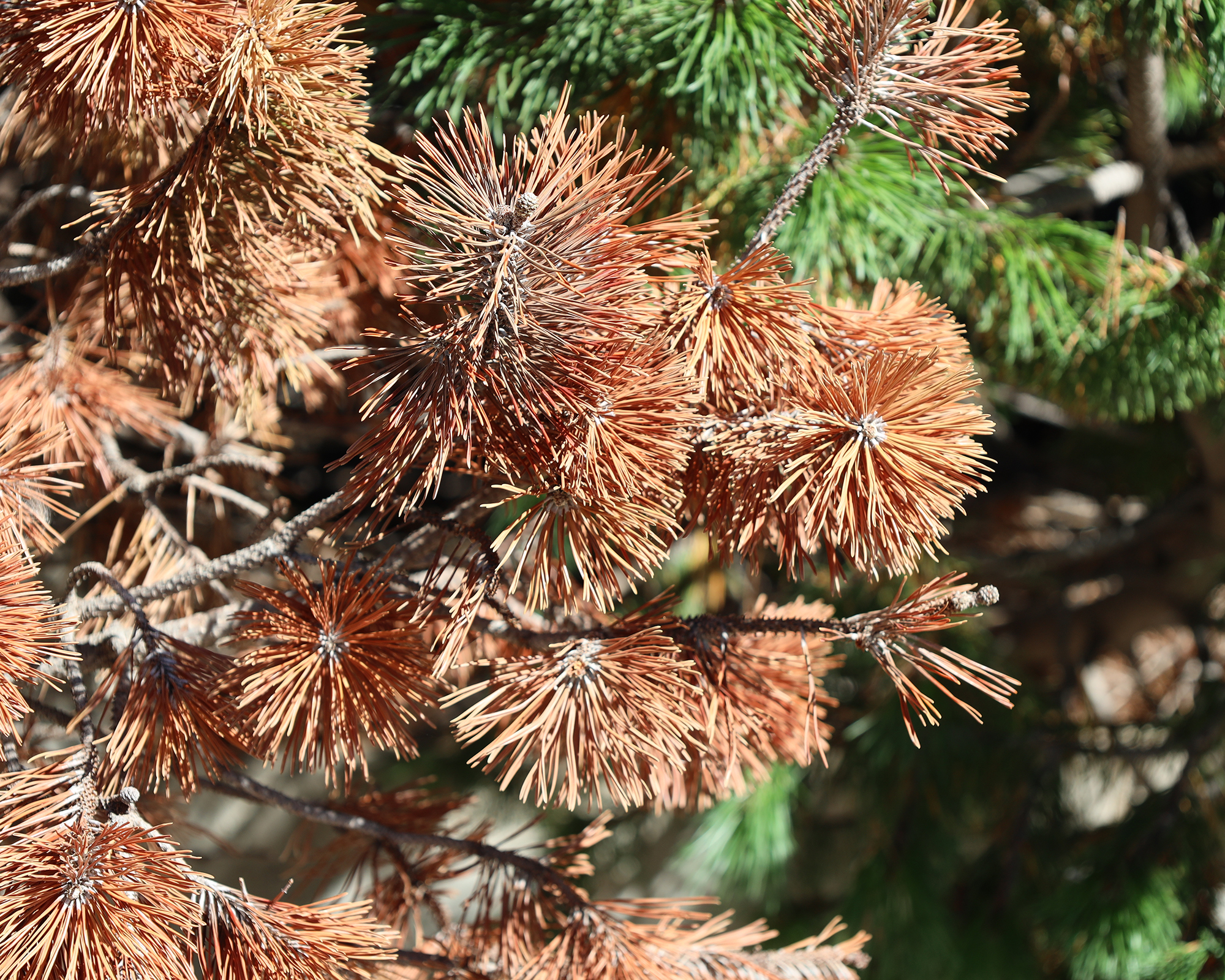
Many types of disease may plague the varieties of trees we commonly use for Christmas. Pines, spruce, and firs are the most commonly found holiday trees.
Several diseases can cause needle cast, where the tree aborts all its foliage over a short period of time. Pinewood nematodes, rusts, and cankers are also common.
The usual signs of any disease distress are in the foliage, which will drop off. Look for lesions and weeping areas in the wood and stems
If your tree does appear to have a disease, do not compost it, as some diseases will not die during the decomposition process and can spread.
6. Needle Drop
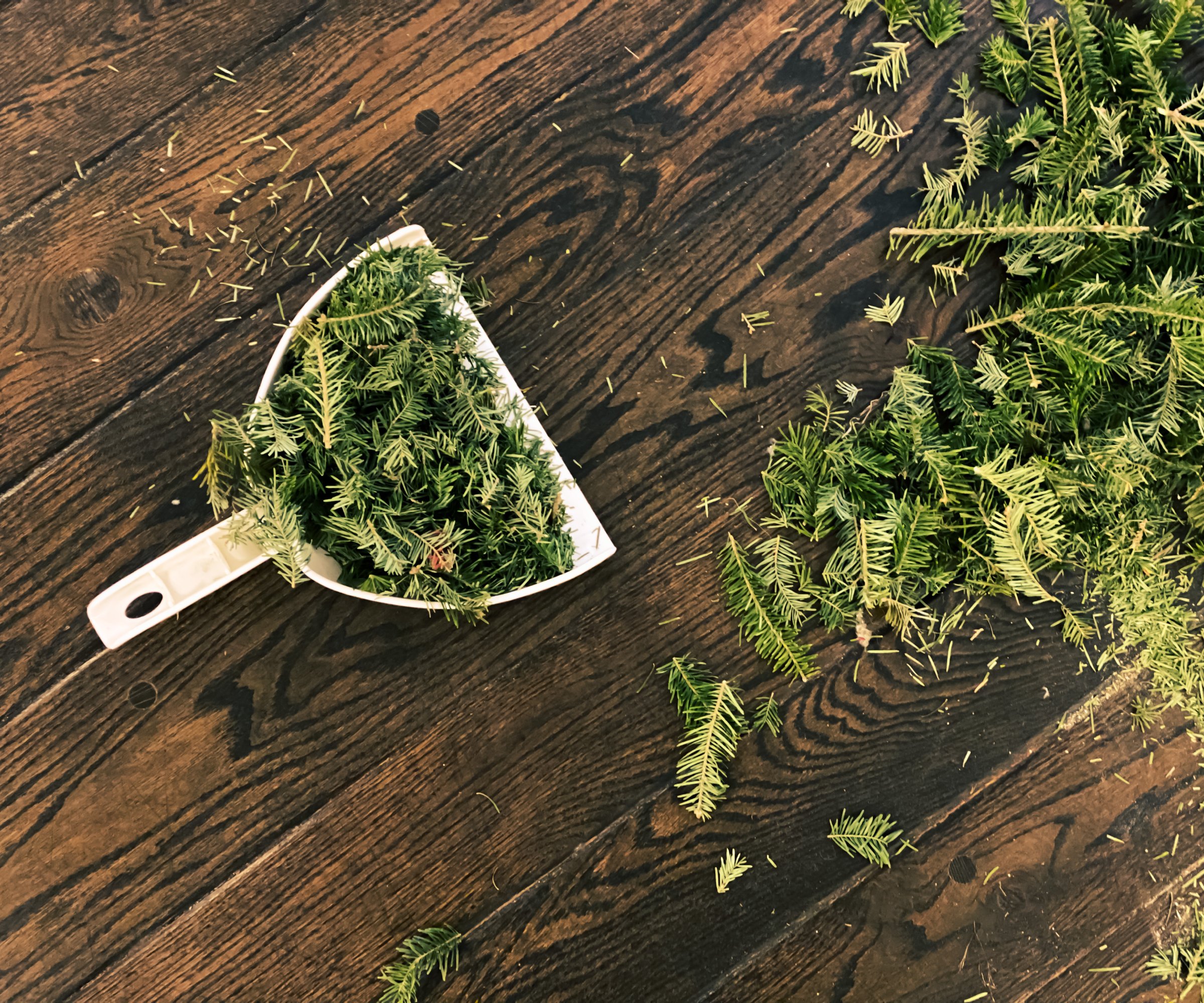
Needle drop is a common response from a tree that has quite literally been killed. But if the foliage dropped is excessive there may be a few causes:
- Situating the tree near vents and drafty doors can change the temperature and stress the tree.
- Failing to provide adequate water will cause foliage loss.
- The winter home is often dry due to the furnace blowing. Such a humidity level will also cause needle drop. Consider erecting a humidifier near the tree, or misting the tree regularly to keep it moist.
- Old-fashioned string lights can also burn the needles. Try using cooler, longer-lasting, and more energy-efficient LED lights instead.
How Long Do Christmas Trees Last?
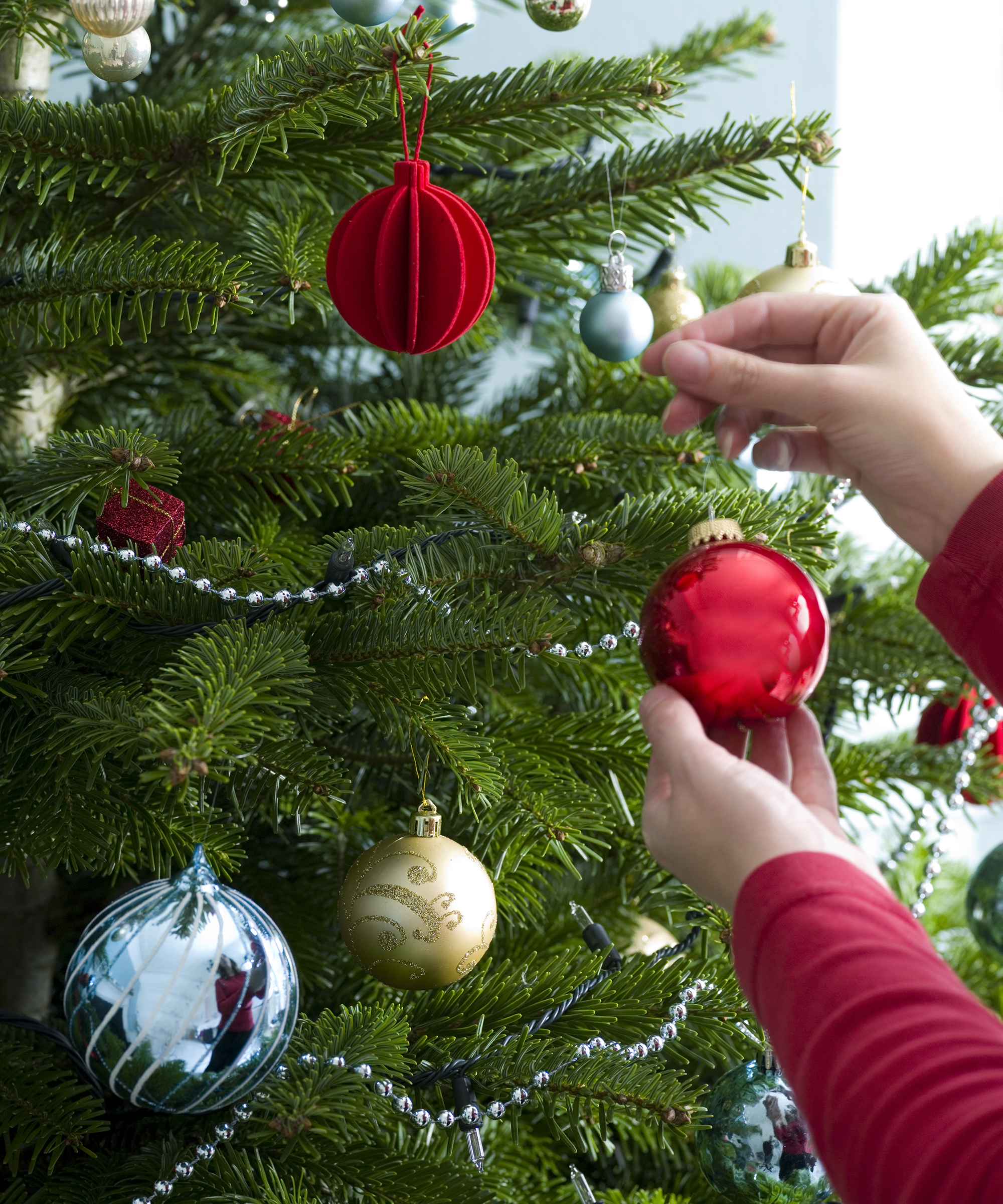
A well-cared-for Christmas tree can last four to six weeks. Provided it has no pests or disease it could even be outside that range. Always look over your tree carefully during selection.
The species of tree you select will also affect how long it remains looking nice. A Fraser fir can last five weeks, while blue spruce, noble fir, and lodgepole pine are all trees that last around four weeks. A beautiful Scotch pine will only look good for about three weeks.
Remember to keep your tree well hydrated, not just for its looks, but to prevent fire danger which is highest during the holiday season.

Bonnie Grant is a professional landscaper with a Certification in Urban Gardening. She has been gardening and writing for 15 years. A former professional chef, she has a passion for edible landscaping.